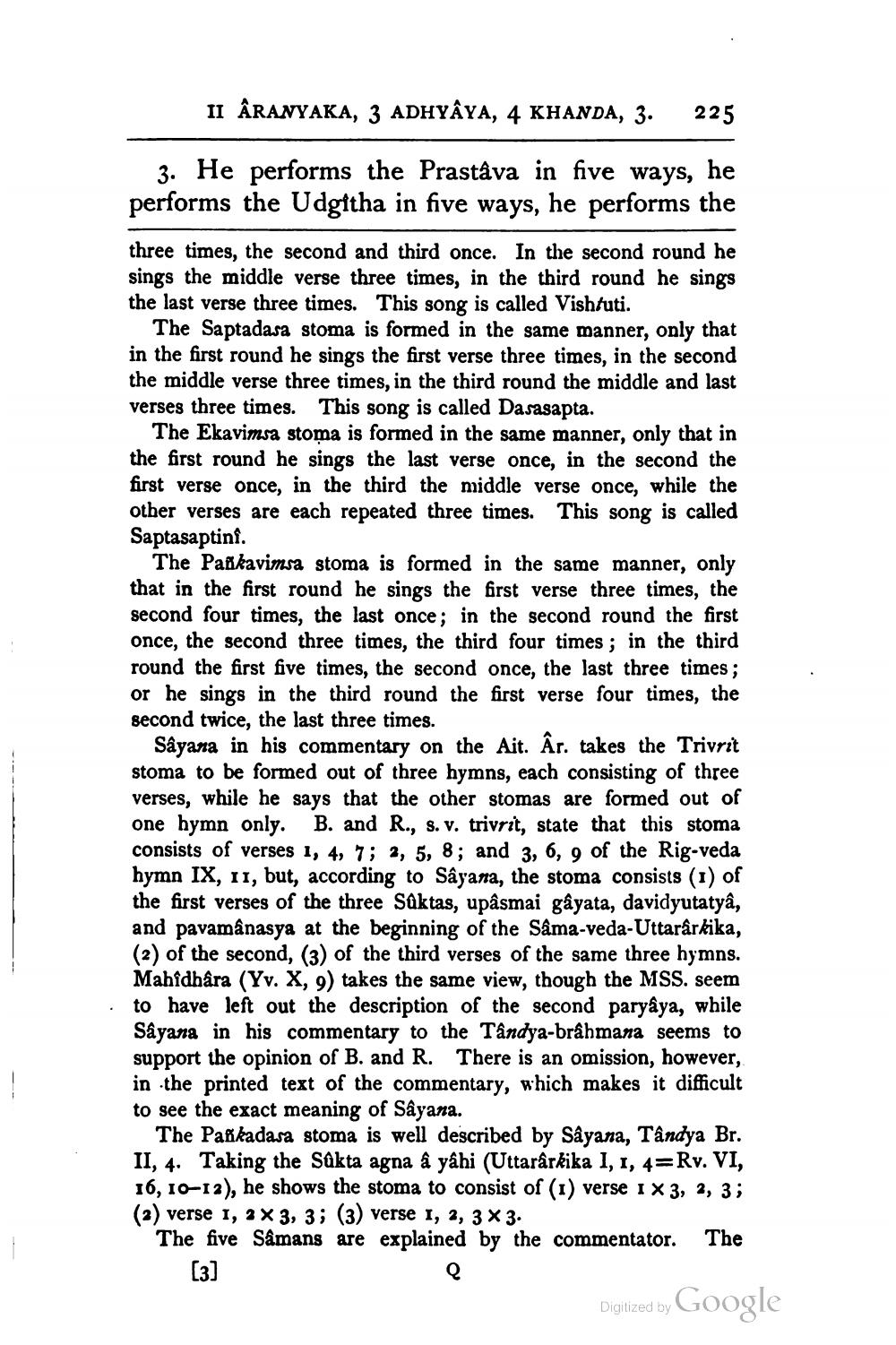________________
II ARANYAKA, 3 ADHYAYA, 4 KHANDA, 3.
225
Pla.
3. He performs the Prastāva in five ways, he performs the Udgftha in five ways, he performs the three times, the second and third once. In the second round he sings the middle verse three times, in the third round he sings the last verse three times. This song is called Vish/uti.
The Saptadasa stoma is formed in the same manner, only that in the first round he sings the first verse three times, in the second the middle verse three times, in the third round the middle and last verses three times. This song is called Da sasapta.
The Ekavimsa stoma is formed in the same manner, only that in the first round he sings the last verse once, in the second the first verse once, in the third the middle verse once, while the other verses are each repeated three times. This song is called Saptasaptinf.
The Paikavimsa stoma is formed in the same manner, only that in the first round he sings the first verse three times, the second four times, the last once; in the second round the first once, the second three times, the third four times; in the third round the first five times, the second once, the last three times; or he sings in the third round the first verse four times, the second twice, the last three times.
Sâyana in his commentary on the Ait. Ar. takes the Trivrit stoma to be formed out of three hymns, each consisting of three verses, while he says that the other stomas are formed out of one hymn only. B. and R., s. v. trivrit, state that this stoma consists of verses 1, 4, 7; 2, 5, 8; and 3, 6, 9 of the Rig-veda hymn IX, 11, but, according to Sâyana, the stoma consists (1) of the first verses of the three Suktas, upâsmai gâyata, davidyutatyâ, and pavamânasya at the beginning of the Sâma-veda-Uttararkika, (2) of the second, (3) of the third verses of the same three hymns. Mahidhara (Yv. X, 9) takes the same view, though the MSS. seem to have left out the description of the second paryâya, while Sâyana in his commentary to the Tândya-brâhmana seems to support the opinion of B. and R. There is an omission, however, in the printed text of the commentary, which makes it difficult to see the exact meaning of Sâyana.
The Pankadasa stoma is well described by Sayana, Tandya Br. II, 4. Taking the Sukta agna a yâhi (Uttarârkika I, 1, 4=Rv. VI, 16,10-12), he shows the stoma to consist of (1) verse 1 x3, 2, 3; (2) verse 1, 2 X 3, 3; (3) verse 1, 2, 3 x 3. The five Såmans are explained by the commentator. The [3]
Digitized by Google




